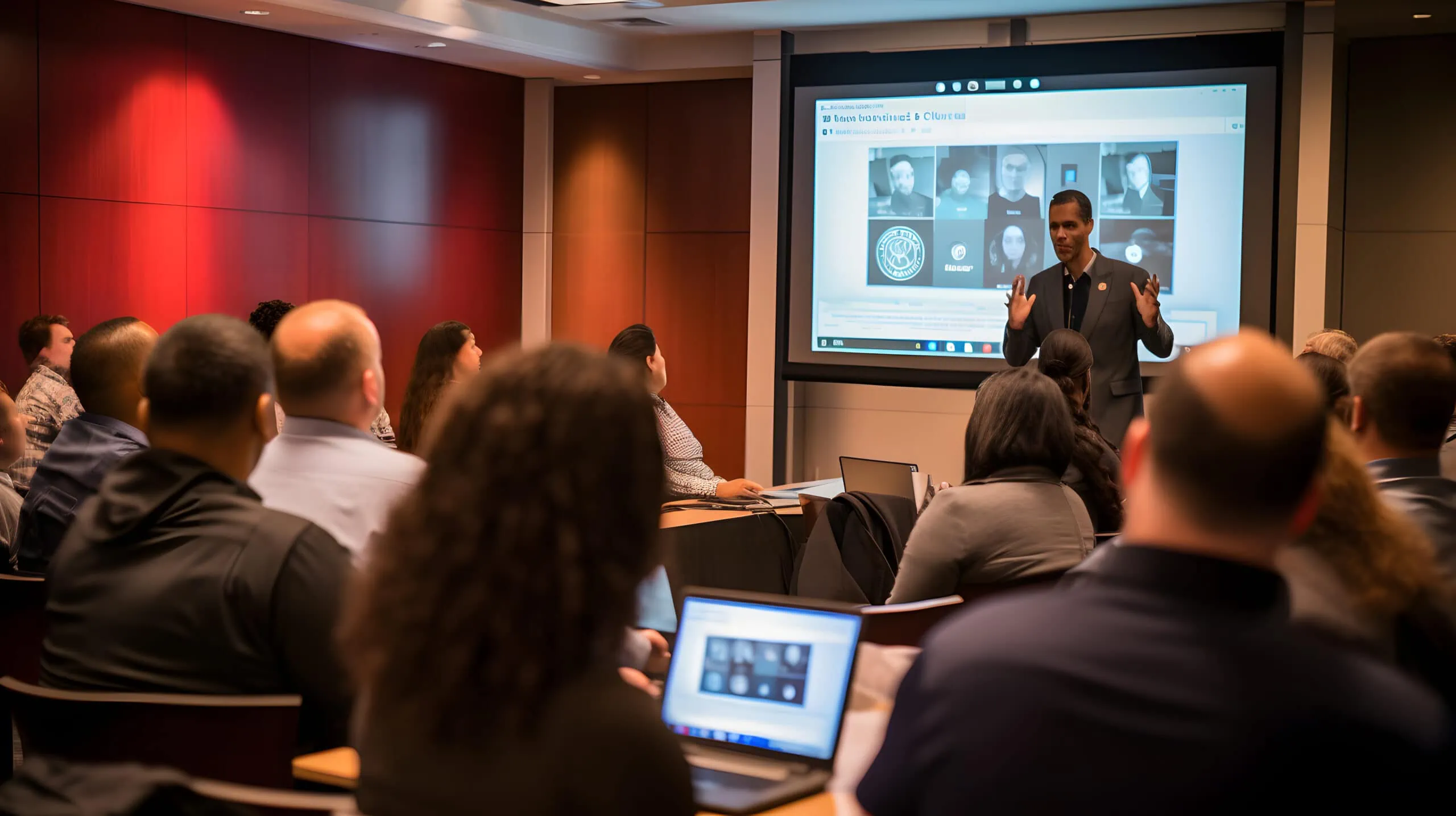The Critical Yet Sometimes-Neglected Element of Cybersecurity
Many perceive cybersecurity as a battle fought solely with technology, but your employees’ awareness and activities are just as big a factor. And while technology will always be critical, employee behavior represents perhaps the biggest vulnerability for any company.
So, it’s vital to take a comprehensive approach that integrates the critical role of employees into your overall strategy. Done right, employees can be a powerful weapon in your cybersecurity arsenal instead of a risk.

So Just How Big is the problem?
Most business owners and managers are aware of the human element of effective cybersecurity but often don’t know what to do about it. In fact, 52% of businesses admit that employees are the biggest weakness in their cybersecurity defenses – technology alone won’t keep them safe from attacks.
Virtually all companies, regardless of size or industry, are targets of cyber criminals and each one is immune from the risk that employees pose to their critical systems and data. At the same time, bad actors know that the fastest way into your systems is through employees that are not paying attention or not sufficiently trained.
Cyber criminals take advantage of this vulnerability using a range of tactics including ransomware, phishing/smishing, and social engineering. They are tricky and, unfortunately are getting better all the time.
In addition to employees that inadvertently enable a breach, businesses must be on the lookout for rogue employees that assist bad actors. It’s unfortunate that some employees can’t be trusted and will go over to the dark side. But it happens and you have to be aware of the threat they present to your business.
So what can you do about it?
The short answer is to build cybersecurity best practices into your company culture and processes. Every employee from company leadership throughout the organization must be equipped with sufficient awareness and knowledge — and commit to practicing constant vigilance to detect and neutralize attacks.
It’s also vitally important to realize that effective measures are not one-and-done. Bad actors won’t let up, so becoming complacent that the problem is solved after issuing a memo or holding a half-day, canned training session won’t keep your company safe. With that in mind, I strongly recommend a comprehensive program built on these key elements:

Cybersecurity education and training
As I previously suggested, training should be on-going and not a one-off. Attacks evolve and employee roles change, so their cybersecurity education and awareness must evolve too. Training works best when customized for your business and employee role and based upon real-world scenarios. Training content should include not just basics like how to spot phishing attacks, protecting mobile devices with multi-factor authentication, but also new types of attacks, company cyber defenses, and cybersecurity policies and incident reporting procedures.
Company leadership should be involved whenever possible to cement the realization that every member of the team has a role to play and shares responsibility for safeguarding the company. The good news is that multiple studies have indicated that the right training programs increase security by 45% or even more.
Leadership and policies
Leadership should be clear and transparent on the importance of effective cybersecurity and make a point that all employees are responsible for keeping the business safe from attacks. Cybersecurity doesn’t just fall on ownership, management, or IT – it’s part of the job for every member of the team. Leadership’s approach should be partners, not police, whenever possible.
Policies should not be just static documents, they should be constantly adapted and updated to account for new attacks, newly discovered vulnerabilities, technology updates, and any significant change in the business. Any updates on policies should be communicated throughout the organization and included in employee training.
Vigilance, reporting, and adaptation
Employees should be empowered to report any suspicious activity immediately. That includes encouraging employees to report slip-ups – not hide them. Employees may click on a link in an email when they shouldn’t. It happens even with conscientious employees, but not reporting an incident only multiplies the damage.
Reporting procedures should be clear and straightforward, and lessons learned through incident reports should be integrated into cybersecurity policies and employee training. The idea is that incident reports are not just an exercise in bureaucracy to be filed away and forgotten, they are building blocks for better, more secure cyber defenses.
Build cybersecurity into your company culture
Make your team members part of the security team as well and give them a sense of stewardship. Educating your employees to the dangers of cyber threats and their critical role in combating it, not only helps keep your business safe, it helps build culture.
And make sure that all team members are aware that cybersecurity is a journey, not a destination. They need to be constantly vigilant and equipped to do their part.
It helps to get help
Cybercriminals are increasingly sophisticated and relentless. In a twisted sort of way, cyberattacks are their business, and to be effective against them, you should consider cybersecurity your business, or at least a critical piece of it. And let’s face it, bad actors have the advantage of focusing on just one thing, while you and your employees have other priorities.
And since you have other priorities, it pays to enlist cybersecurity experts to your side. For most SMB companies, that means partnering with a first-rate MSP with deep cybersecurity experience and expertise or contracting a vCISO (virtual Chief Information Security Officer).
K3 Technology can lead the way to higher levels of security
At K3 Technology, our expertise goes far beyond the technological aspects of cybersecurity and we know how to bring employees into the equation – making team members an asset rather than a liability. We partner with businesses like yours, guiding them on how to raise employee awareness, provide proper training and even deploy the right technology to keep your systems and operations safe. It’s a powerful combination that we can apply to your company to build the best Cybersecurity strategy for you. Contact us at K3 Technology to find out more.
In the meantime, click on the links below for more insight into just how important employees are to your cybersecurity strategy:
The Human Factor in Cybersecurity: How Employees are Making Employees Vulnerable From Within






